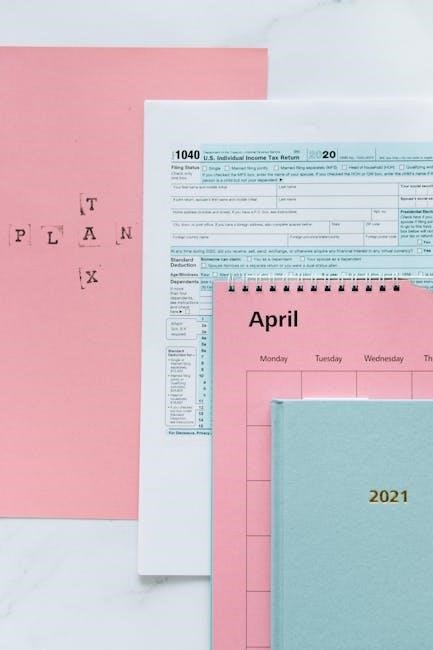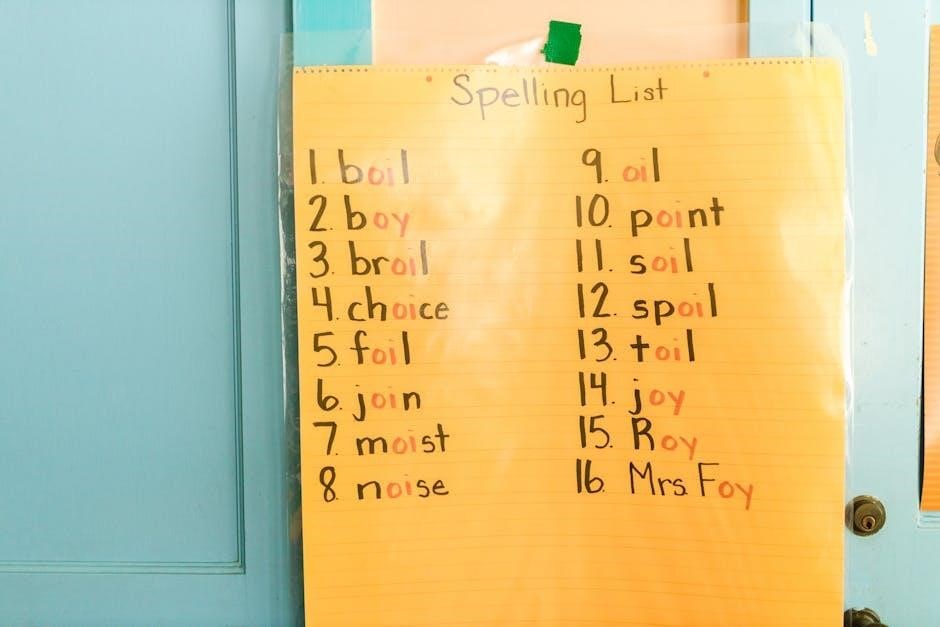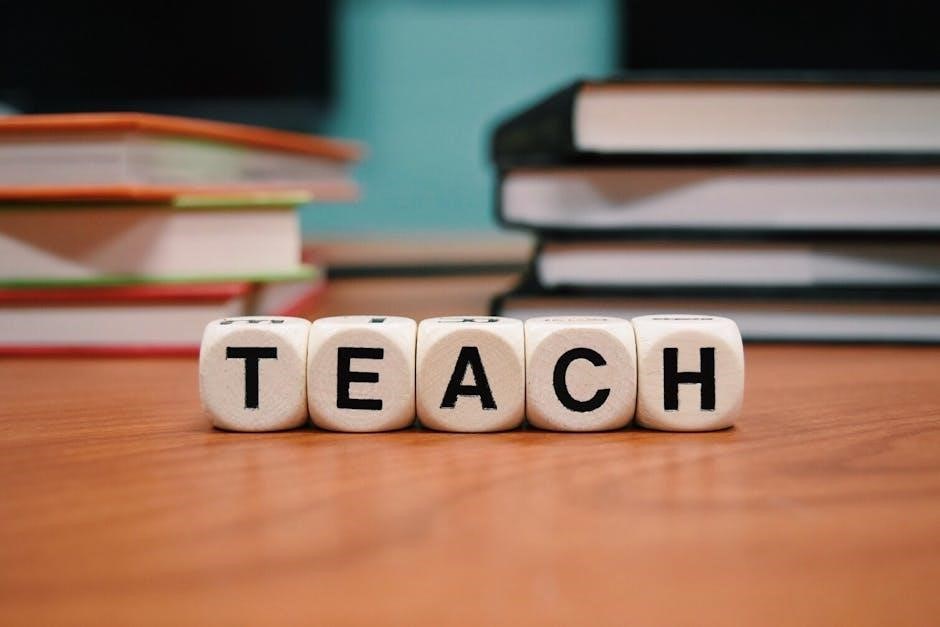A Year 2 Spelling Words PDF is a structured resource designed to help students master essential spelling skills. It includes weekly lists, common exception words, and phonics-based activities, making it accessible for teachers and parents. This tool supports visual learning and engages young learners effectively.
What is a Year 2 Spelling Words PDF?
A Year 2 Spelling Words PDF is a comprehensive resource designed for students in their second year of primary education. It typically includes lists of spelling words, such as high-frequency words, common exception words, and phonics-based lists. These documents are often organized into weekly or termly sections, making it easy for teachers and parents to track progress. Many PDFs also include activities, exercises, and games to engage learners. They are usually printable and accessible, providing a structured approach to spelling practice. The content aligns with curriculum requirements, ensuring foundational spelling skills are developed effectively.
Why is it important for young learners?
Mastering spelling in Year 2 is crucial for building foundational literacy skills. It enhances decoding abilities, improves writing confidence, and supports overall academic success. Regular practice with structured resources like spelling PDFs helps young learners develop consistency and fluency. These tools also foster independence, allowing children to practice at their own pace. By focusing on high-frequency and common exception words, students gain a strong vocabulary base, which is essential for clear communication and future learning. Effective spelling skills boost self-esteem and create a solid foundation for lifelong literacy.

Structure of the Year 2 Spelling Words PDF
The PDF is organized into weekly spelling lists, common exception words, and phonics-based activities. It provides a clear, progressive framework for learning and practicing spelling effectively.
Weekly Spelling Lists
The Year 2 Spelling Words PDF includes structured weekly spelling lists, each containing that gradually increase in difficulty. Examples include Action, Express, and Emergency. These lists are organized by term, such as Autumn 1, with weeks 1-4. Each week focuses on specific themes or phonics patterns, helping students build confidence and mastery. The lists are designed to align with curriculum standards, ensuring comprehensive coverage of essential spelling skills. This approach allows for consistent practice and progress tracking throughout the year.
Common Exception Words
Common Exception Words are high-frequency words that don’t follow standard spelling rules. Examples include because, child, and door. These words are highlighted in red within the PDF, making them stand out for focused practice. They are integrated into weekly lists and often appear in writing exercises, ensuring students commit them to memory. Mastery of these words is crucial for fluency in reading and writing, and they are regularly tested to monitor progress and understanding.
Phonics-Based Lists
Phonics-Based Lists organize words by specific phonetic patterns, helping students decode and spell effectively. Examples include words like action and express, which follow predictable sound-letter relationships. These lists are structured to introduce sounds progressively, from simple to complex. Activities such as anagrams and gap-filling exercises reinforce phonics rules. By practicing these lists, students improve decoding skills, spelling accuracy, and reading confidence. Phonics-Based Lists are a cornerstone of Year 2 spelling, providing a logical and engaging way to master foundational literacy skills.

Benefits of Using a Year 2 Spelling Words PDF
A Year 2 Spelling Words PDF offers versatility, accessibility, and visual appeal, making spelling engaging for students while providing teachers and parents with effective teaching tools.
Versatility in Learning
The Year 2 Spelling Words PDF offers flexibility for various learning environments; It can be used digitally or printed, catering to both classroom and home settings. The resource supports interactive activities, such as highlighting words or creating flashcards, making it adaptable to different learning styles. Additionally, it integrates with educational apps, allowing students to practice spelling anywhere. This versatility ensures that learners can engage with the material in ways that suit their preferences and pace, fostering a dynamic and effective learning experience. Its adaptability makes it a valuable tool for consistent progress in spelling skills.
Accessibility for Teachers and Parents
The Year 2 Spelling Words PDF is designed to be easily accessible for both educators and guardians. It can be downloaded or shared via email, ensuring quick distribution. The format is compatible with various devices, allowing teachers to project it in class or parents to print worksheets at home. Its clear layout and organized structure make it simple to navigate, enabling seamless integration into lesson plans or home learning routines. This accessibility ensures consistent support for spelling development, whether in a classroom or domestic setting, fostering collaboration between teachers and parents.
Visual Appeal for Engaged Learning
The Year 2 Spelling Words PDF incorporates vibrant colors and engaging designs to capture young learners’ attention. Illustrations and visually appealing fonts make the content more interactive, fostering a positive learning environment. The structured layout ensures clarity, while images and diagrams complement the spelling exercises, helping students focus and understand complex patterns. This visual approach makes spelling practice enjoyable and effective, encouraging students to explore and learn with enthusiasm.

Common Exception Words in Year 2 Spelling

Common exception words in Year 2 spelling are high-frequency words that don’t follow regular spelling rules, such as “because” and “everybody.” These words are crucial for building reading and writing skills and often require memorization as they cannot be sounded out. Regular practice helps students master these tricky spellings effectively.
Listing Common Exception Words
Common exception words for Year 2 include high-frequency words like “because,” “everybody,” “child,” and “only.” These words often don’t follow standard spelling rules and must be memorized. Examples such as “said,” “have,” “like,” and “some” are frequently used but irregularly spelled. Lists may also incorporate words like “again,” “friend,” and “about,” which are essential for early literacy. These words are typically highlighted in spelling resources to ensure students practice and master them effectively. Regular review helps build confidence and accuracy in spelling these tricky words.
Examples and Their Usage
Common exception words like “again” are used in sentences such as, “She wore her coat again because it was cold.” Another example is “friend,” as in, “He is my best friend at school.” The word “about” can be used in, “We learned about animals in class.” Similarly, “could” appears in, “I could see the stars last night.” These examples demonstrate how these words fit naturally into everyday language, helping students understand their context and usage. Regular practice with such examples enhances spelling and writing skills effectively for young learners. These words are essential for building a strong foundation in spelling and literacy.
Tips for Mastering Common Exceptions
Mastering common exception words requires consistent practice and effective strategies. Start by creating flashcards with the word on one side and its meaning or usage on the other. Practice daily, focusing on one or two words at a time. Use the words in sentences to reinforce memory, such as writing short stories or journals. Highlight tricky parts of the word and discuss why they are exceptions. Make it fun with games like word searches or matching activities. Encourage reading aloud to improve recognition and spelling accuracy. Regular review and interactive exercises will help solidify these words in long-term memory, ensuring confidence and fluency in spelling.

Practical Activities to Reinforce Spelling
Engage students with interactive spelling games, hands-on tasks, and creative writing exercises. Use flashcards, word searches, and quizzes to make learning fun and effective for young learners.
Spelling Games and Worksheets
Spelling games and worksheets are effective tools for engaging Year 2 students. Word searches, crossword puzzles, and quizzes make learning interactive. Worksheets with tracing, matching, and fill-in-the-blank activities reinforce spelling patterns. Games like Bingo or Scavenger Hunts add fun, while flashcards and anagrams improve recognition. These resources cater to different learning styles, making spelling practice enjoyable and impactful. They also align with curriculum goals, ensuring students build a strong foundation in spelling.
Daily Writing Exercises
Daily writing exercises play a crucial role in reinforcing spelling skills for Year 2 students. Activities such as journaling, sentence writing, and short paragraphs help integrate spelling words into everyday practice. Students can use word banks or lists to craft meaningful sentences, encouraging correct usage. These exercises also improve handwriting and grammar, making them a holistic learning tool. Regular writing practice builds confidence and fluency, ensuring that spelling becomes second nature for young learners. Consistency is key to achieving lasting progress.
Interactive Spelling Resources
Interactive spelling resources, such as spelling apps and online games, make learning engaging and fun for Year 2 students. These tools often feature games, quizzes, and audio-visual aids to help students practice spelling in an immersive way. Many resources include progress tracking, allowing teachers and parents to monitor improvement. Interactive whiteboard activities also enable collaborative learning in classrooms. These dynamic tools cater to different learning styles, ensuring that students stay motivated and enjoy the process of mastering their spelling skills effectively. They are ideal for modern, tech-savvy learners who thrive on interaction and immediate feedback.

Incorporating Technology into Spelling Practice
Technology enhances spelling practice through interactive apps, online games, and digital tools. These resources engage students, provide immediate feedback, and make learning fun and effective for Year 2 learners.
Spelling Apps for Year 2 Students
Spelling apps like TTRockstars and Spelling Shed offer interactive games and exercises tailored for Year 2 students. These apps provide phonics-based activities, exception word practice, and progress tracking; They engage students with rewards and multiplayer options, making learning fun. Parents and teachers can access detailed reports to monitor improvement. Apps like these are ideal for daily practice, reinforcing spelling skills in an enjoyable and effective manner. They are widely recommended for their ability to cater to individual learning needs and boost confidence in young spellers.
Online Spelling Games
Online spelling games provide an engaging way for Year 2 students to practice their spelling skills. Interactive activities like crossword puzzles, word searches, and drag-and-drop exercises make learning fun. Many platforms offer themed games that align with curriculum topics, such as seasonal or holiday-themed spelling lists. These games often include audio support, helping students with pronunciation and word recognition. They also track progress, offering rewards for accuracy and speed. Online spelling games are versatile, catering to different learning styles and making practice enjoyable for students at home or in the classroom.
Interactive Whiteboard Activities
Interactive whiteboard activities are a dynamic tool for teaching Year 2 spelling words. They offer engaging lessons with features like drag-and-drop word building, spelling quizzes, and interactive games. Teachers can use these activities to create visually appealing and hands-on learning experiences. Students can practice spelling by arranging letters, matching words, and participating in group challenges. Many whiteboard activities include audio support and instant feedback, helping students learn and correct their spelling mistakes. These resources make spelling lessons fun and interactive, fostering collaboration and active participation in the classroom.

Assessment and Progress Tracking
Assessment and progress tracking are crucial for monitoring students’ spelling development. Teachers use diagnostic assessments and weekly spelling tests to identify strengths and areas for improvement. Technology tools offer detailed progress reports, enabling personalized learning plans and targeted support. Regular feedback helps students stay motivated and confident in their spelling abilities.
Initial Diagnostic Assessments
Initial diagnostic assessments are essential for evaluating students’ spelling skills at the start of Year 2. These tests identify strengths and areas needing improvement, helping teachers create tailored learning plans. By understanding each student’s baseline, educators can set realistic goals and track progress effectively. Diagnostic assessments often include a mix of common exception words and phonics-based tasks, ensuring a comprehensive understanding of their spelling abilities. This data-driven approach supports personalized instruction and fosters a strong foundation for future learning. Accurate assessments lay the groundwork for successful spelling development throughout the year.
Weekly Spelling Tests
Weekly spelling tests are a key component of Year 2 spelling practice, helping students reinforce their learning and build confidence. These tests typically include a mix of phonics-based words, common exception words, and high-frequency vocabulary. Teachers use these assessments to monitor progress and identify areas where students may need additional support. Parents can also use the results to guide home practice, ensuring consistent learning. Regular testing helps students develop a routine and mastery of spelling skills, preparing them for future academic success. Consistency is vital for long-term retention and improvement.
Using Technology for Progress Tracking
Technology plays a vital role in monitoring spelling progress for Year 2 students. Interactive apps and online platforms provide tools to track accuracy, speed, and mastery of spelling lists. These digital resources often include features like progress charts, audio feedback, and customizable assessments. Teachers and parents can access detailed reports to identify strengths and areas needing improvement. Automated scoring and data analysis simplify the tracking process, ensuring personalized learning. This digital approach enhances engagement and provides immediate feedback, making it easier to support students’ spelling development effectively. Regular updates help tailor instruction to meet individual needs. Technology bridges the gap between classroom and home learning seamlessly.

Additional Resources for Year 2 Spelling
Recommended spelling workbooks, online tools, and engaging videos complement the Year 2 Spelling Words PDF, offering diverse methods to reinforce learning and cater to different learning styles effectively.
Recommended Spelling Workbooks
Several spelling workbooks complement the Year 2 Spelling Words PDF, offering structured activities and exercises. Scholastic’s “Spelling Secrets.pdf” and other phonics-based resources provide comprehensive practice. These workbooks include daily practice pages, high-frequency word lists, and engaging exercises tailored for young learners. Many feature visual aids, word games, and hands-on tasks to make learning interactive. They often align with the national curriculum, covering phonics, common exception words, and spelling patterns. Teachers’ manuals with answer keys further support educators in tracking progress and providing feedback. These workbooks are ideal for reinforcing spelling skills at home and in the classroom.
Online Tools for Spelling Practice
Online tools offer interactive and engaging ways for Year 2 students to practice spelling. Platforms like Spelling Shed and Teach Your Monster provide games, quizzes, and activities tailored to young learners. These tools often feature customizable lists, progress tracking, and rewards to motivate students. Many include audio support for pronunciation and interactive exercises that make learning fun. Parents and teachers can access detailed reports to monitor improvement. These resources are accessible anywhere, making spelling practice flexible and enjoyable for students of all learning styles and paces.
Engaging Spelling Videos
Engaging spelling videos are a dynamic way to captivate Year 2 students and enhance their learning experience. These videos often feature animations, songs, and interactive elements that make spelling fun and memorable. Many videos focus on specific themes or word patterns, helping students connect sounds and spellings. Popular platforms like YouTube and educational websites offer a variety of spelling videos tailored for young learners. By incorporating these videos into daily routines, teachers and parents can create an enjoyable and immersive environment that supports spelling development and keeps students motivated and eager to learn.

Creating a Custom Year 2 Spelling List
Customizing a Year 2 spelling list allows teachers to adapt words based on student progress and interests. Incorporating personal vocabulary and thematic words makes learning engaging and relevant, ensuring each child’s needs are met while tracking their achievements effectively.
How to Personalize Your List
To create a tailored spelling list, begin with a diagnostic assessment to identify your child’s current skill level. Incorporate high-frequency and personal vocabulary words relevant to their interests. Add thematic words aligned with school topics or seasonal themes. Use resources like Year 2 spelling PDFs for structured lists. Integrate common exception words and phonics patterns to ensure comprehensive learning. Regularly review and update the list to reflect progress and new challenges. By personalizing, you make spelling practice meaningful and effective for your child.
Tips for Effective Customization
Start with a diagnostic assessment to identify your child’s current spelling level. Incorporate high-frequency words and personal vocabulary to make learning relevant. Align the list with curriculum themes or seasonal topics to maintain engagement. Mix phonics-based patterns with common exception words for balanced practice. Regularly update the list to reflect progress and introduce new challenges. Involve your child in the process to foster ownership. Use visual aids and interactive activities to enhance retention. Provide immediate feedback and celebrate small milestones to build confidence.
Examples of Customized Lists
Customized spelling lists can focus on specific themes, such as seasons or holidays. For example, a winter-themed list might include words like “snow,” “cold,” and “coat.” Another list could center on family vocabulary, featuring words like “mother,” “father,” and “sibling.” Additionally, lists can incorporate personal interests, such as “pet” or “garden,” to make learning more engaging. Mixing high-frequency words with phonics patterns ensures a well-rounded approach. These tailored lists help students connect spelling to real-life contexts, enhancing retention and interest.
The Year 2 Spelling Words PDF is a valuable resource for consistent practice and engagement. It supports structured learning, helping students build confidence in spelling skills effectively.
Final Thoughts on Year 2 Spelling PDFs
The Year 2 Spelling Words PDF is an essential tool for fostering spelling mastery in young learners. By providing structured lists, common exceptions, and phonics-based exercises, it ensures consistent practice and progress. The resource is versatile, catering to both classroom and home learning environments. Its accessibility and visual appeal make it engaging for students, while its comprehensive design supports teachers and parents in tracking development. Regular use of this PDF can significantly enhance spelling confidence and proficiency, laying a strong foundation for future academic success.
Encouraging Continued Practice
Consistent practice is key to mastering Year 2 spelling words. Parents and teachers can foster a love for learning by incorporating fun activities like spelling games, quizzes, and interactive exercises. Using technology, such as spelling apps and online games, can make practice engaging and accessible. Regular review of weekly lists and common exception words helps reinforce memory. Celebrating progress, no matter how small, motivates students to continue improving. By creating a supportive environment, learners develop confidence and a strong foundation in spelling for future success.